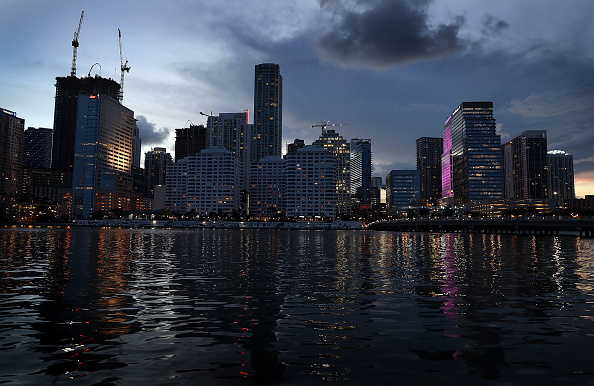Condos and single-family homes spent more time on the market and sold for a bigger discounts as luxury homeowners have begun to face reality in South Florida, according to newly released reports.
The fourth quarter Douglas Elliman reports show the more than yearlong slowdown in Miami and Miami Beach’s luxury market is continuing, with Boca Raton and Fort Lauderdale as bright spots in the overall South Florida market.
“For deals to happen, the sellers are traveling a lot further to meet the buyer in price than they were a year ago,” Jonathan Miller, whose firm Miller Samuel authors the quarterly reports for Douglas Elliman, told The Real Deal. “That’s a good thing in the long run. It’s a sign of the market adjusting.”
Miami Beach, barrier islands
In Miami Beach and the barrier islands, the median sales price of both luxury condos and single-family homes declined and days spent on the market increased.
The median sales price of luxury single-family homes dropped by 56.4 percent to $5.45 million, according to the report. But homes spent less time on the market than condos at an average of 80 days, up from 62 in the fourth quarter of 2015.
Condo prices declined by 2.1 percent to $2.35 million compared to the fourth quarter of 2015. But they spent much longer on the market – on average, luxury condos in the beach and barrier islands spent 171 days on the market before they sold, compared to 62 days a year prior.
The difference between asking and closing prices also grew by 12.7 percent, up from 7.2 percent. An example of that is the recent sale of a unit at Faena House, which just traded for $12.5 million, a steep discount from its $16.5 million asking and original closing price.
Across the board, that market saw an increase in listing inventory, especially condos. Sellers in Miami are “still anchored to 2014 prices,” Miller said. “We tend to see that more in the condo market because it saw a new product introduced and that had the effect of influencing non-luxury higher.”
He thinks it could take about two years for sellers to “break their anchor to the prior market. The seller is in mourning for not getting the price they wanted,” Miller told TRD.
The decline and velocity of sales were still stronger in the entry and middle markets, which can generally be seen across the U.S. and submarkets in South Florida. “If you look across many of the condo markets, you’re seeing an increase in listing discount. For deals to happen, the sellers are traveling a lot further to meet the buyer in price than they were a year ago.”
Miami mainland
Prices are continuing to rise in Miami due to a sharp decline in distressed sales and lack of overall inventory. Non-luxury and luxury both spent more time on the market compared to a year ago, according to the report. Again, the luxury sector took the bigger hit: the inventory of high-end condos increased by 2.6 percent to 2,947, while that of homes rose 16.9 percent to 1,098 houses. Days spent sitting on the market also went into the triple digits for luxury homes and condos.
Sales also fell on a year-over-year basis. The overall mainland saw the number of sales slump by 3.6 percent to 3,542. Luxury condo sales fell by 10.6 percent to 1,645 sales in the fourth quarter, and home sales declined by 10.1 percent to 1,897.
While Miami Beach is nearly free of its distressed product, it’s more of a factor in the mainland, Miller said. When he first started tracking the markets four years ago, distressed product in mainland Miami was at 38 percent. The latest report shows 225 distressed homes and condos sold during fourth quarter of 2016, marking a 16.5 percent decrease from the previous year. The price of those properties is also rising as inventory falls.
Sales volume may be down in Miami, “but it’s still higher than it was before this boom started in 2014,” Miller told TRD.
“The market has successfully rebranded itself from the distressed capital of the world to a luxury market,” he said. “There’s a tremendous amount of product that is being absorbed and pricing is adjusting for that.”
Markets to watch
Boca Raton and Fort Lauderdale continue to be the stronger markets in South Florida, Miller said. In Boca, the condo market outperformed the single-family market in price and sales. Luxury condos spent less time on the market, sold for a lower discount, and sold for higher prices. Listing inventory also fell, by 29.8 percent to 275 units.
Luxury single-family homes didn’t fare as well in Boca Raton, according to the report. Inventory took a 36.5 percent leap compared to a year earlier, up to 565 homes. The price fell by double digits, and the discount was up. The demand for higher-end homes fell, skewing average prices, the report said.
Inventory increased in Fort Lauderdale, as did the median sales price.
“The median price in Fort Lauderdale is a record [$305,000] going back at least 10 years, blending of homes and condos,” Miller said. “That’s something we’re not seeing in most of the other markets.”
